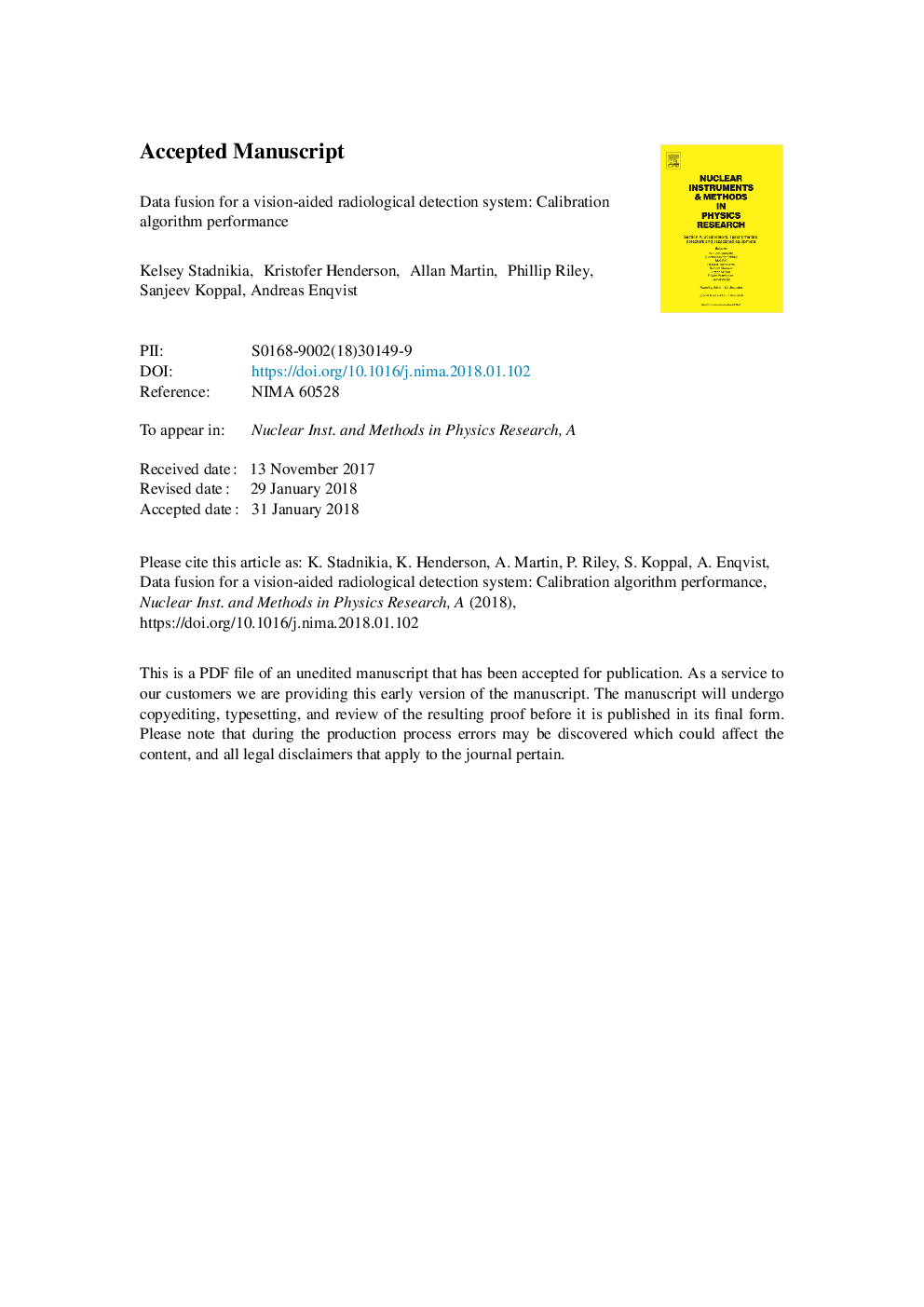| کد مقاله | کد نشریه | سال انتشار | مقاله انگلیسی | نسخه تمام متن |
|---|---|---|---|---|
| 8166495 | 1526236 | 2018 | 21 صفحه PDF | دانلود رایگان |
عنوان انگلیسی مقاله ISI
Data fusion for a vision-aided radiological detection system: Calibration algorithm performance
ترجمه فارسی عنوان
تلفیق داده ها برای سیستم تشخیص رادیولوژیک با کمک بصری: عملکرد الگوریتم کالیبراسیون
دانلود مقاله + سفارش ترجمه
دانلود مقاله ISI انگلیسی
رایگان برای ایرانیان
کلمات کلیدی
موضوعات مرتبط
مهندسی و علوم پایه
فیزیک و نجوم
ابزار دقیق
چکیده انگلیسی
In order to improve the ability to detect, locate, track and identify nuclear/radiological threats, the University of Florida nuclear detection community has teamed up with the 3D vision community to collaborate on a low cost data fusion system. The key is to develop an algorithm to fuse the data from multiple radiological and 3D vision sensors as one system. The system under development at the University of Florida is being assessed with various types of radiological detectors and widely available visual sensors. A series of experiments were devised utilizing two EJ-309 liquid organic scintillation detectors (one primary and one secondary), a Microsoft Kinect for Windows v2 sensor and a Velodyne HDL-32E High Definition LiDAR Sensor which is a highly sensitive vision sensor primarily used to generate data for self-driving cars. Each experiment consisted of 27 static measurements of a source arranged in a cube with three different distances in each dimension. The source used was Cf-252. The calibration algorithm developed is utilized to calibrate the relative 3D-location of the two different types of sensors without need to measure it by hand; thus, preventing operator manipulation and human errors. The algorithm can also account for the facility dependent deviation from ideal data fusion correlation. Use of the vision sensor to determine the location of a sensor would also limit the possible locations and it does not allow for room dependence (facility dependent deviation) to generate a detector pseudo-location to be used for data analysis later. Using manually measured source location data, our algorithm-predicted the offset detector location within an average of 20 cm calibration-difference to its actual location. Calibration-difference is the Euclidean distance from the algorithm predicted detector location to the measured detector location. The Kinect vision sensor data produced an average calibration-difference of 35 cm and the HDL-32E produced an average calibration-difference of 22 cm. Using NaI and He-3 detectors in place of the EJ-309, the calibration-difference was 52 cm for NaI and 75 cm for He-3. The algorithm is not detector dependent; however, from these results it was determined that detector dependent adjustments are required.
ناشر
Database: Elsevier - ScienceDirect (ساینس دایرکت)
Journal: Nuclear Instruments and Methods in Physics Research Section A: Accelerators, Spectrometers, Detectors and Associated Equipment - Volume 890, 11 May 2018, Pages 8-17
Journal: Nuclear Instruments and Methods in Physics Research Section A: Accelerators, Spectrometers, Detectors and Associated Equipment - Volume 890, 11 May 2018, Pages 8-17
نویسندگان
Kelsey Stadnikia, Kristofer Henderson, Allan Martin, Phillip Riley, Sanjeev Koppal, Andreas Enqvist,
